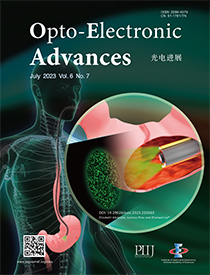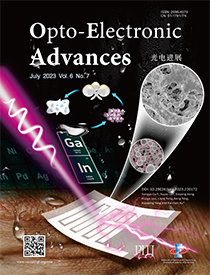2023 Vol. 6, No. 7
Cover story: Abraham E, Zhou JX, Liu ZW. Speckle structured illumination endoscopy with enhanced resolution at wide field of view and depth of field. Opto-Electron Adv 6, 220163 (2023).
Super resolution imaging has been a hot topic over the last few decades particularly in the field of microscopy in order to enhance image resolution for relevant investigation and analysis. Out of which, structured illumination microscopy (SIM) is one of the most widely applied wide field super resolution imaging technique with high temporal resolution and low phototoxicity. However, the spatial resolution of SIM is typically limited to two times the diffraction limit of the system. Furthermore, the imaging depth of field in SIM is very small making it unsuitable to domains that warrant a need for imaging at wide field of view and large depth of field, such as in endoscopy. Recently, Professor Liu’s research group at the University of California San Diego reported a super resolution imaging technique called speckle structured illumination endoscopy (SSIE) that utilizes laser based specular illumination to produce super resolution in endoscopic images at wide field of view and large depth of field; capable of exceeding the two-time diffraction limit as is typically observed by the SIM approach. The SSIE is insensitive to the 3D morphology of the specimen and to the deformation of the illuminations used. This greatly simplifies the experimental setup as there are no calibration protocols and no stringent control of illumination patterns nor focusing optics. Furthermore, the SSIE is a low cost, easy to implement method making it translatable to imaging fields broader than endoscopy. The enhancement in resolution of about 2-4.5 times that of a standard white light endoscopic (WLE) system as demonstrated in this study presents a unique research route to super resolution in endoscopic imaging at optimal parameters which might be beneficial to the practice of clinical endoscopy and to other similar imaging domains where high resolution, wide field of view and large depth of field are simultaneously critical.
Back cover story: Cui SY, Lu YY, Kong DP, Luo HY, Peng L et al. Laser direct writing of Ga2O3/liquid metal-based flexible humidity sensors. Opto-Electron Adv 6, 220172 (2023).
Recent studies in emerging flexible humidity sensors have achieved great developments in advanced manufacturing methods, as well as innovative applications including human healthcare detection, plant health management and noncontact human-machine interfaces. Recently, Professor Xu in flexible electronics research group at the State Key Laboratory of Fluid Power and Mechatronic Systems, School of Mechanical Engineering, Zhejiang University reported a highly sensitive and stable humidity sensor based on one-step laser direct writing of dispersed Ga2O3 nanoparticles. Owing to the photothermal effect of laser, the Ga2O3-wrapped liquid metal nanoparticles can be selectively sintered and converted from insulative to conductive traces with a resistivity of 0.19 Ω·cm, while the untreated regions serve as active sensing layers in response to moisture changes. Under 95% relative humidity, the humidity sensor displays a highly stable performance along with rapid response and recover time. Utilizing these superior properties, the Ga2O3/liquid metal-based humidity sensor is able to monitor human respiration rate, as well as skin moisture of the palm under different physiological states for healthcare monitoring.

-
{{article.year}}, {{article.volume}}({{article.issue}}): {{article.fpage | processPage:article.lpage:6}}. doi: {{article.doi}}{{article.articleStateNameEn}}, Published online {{article.preferredDate | date:'dd MMMM yyyy'}}, doi: {{article.doi}}{{article.articleStateNameEn}}, Accepted Date {{article.acceptedDate | date:'dd MMMM yyyy'}}CSTR: {{article.cstr}}
-
{{article.year}}, {{article.volume}}({{article.issue}}): {{article.fpage | processPage:article.lpage:6}}. doi: {{article.doi}}{{article.articleStateNameEn}}, Published online {{article.preferredDate | date:'dd MMMM yyyy'}}, doi: {{article.doi}}{{article.articleStateNameEn}}, Accepted Date {{article.acceptedDate | date:'dd MMMM yyyy'}}CSTR: {{article.cstr}}

 E-mail Alert
E-mail Alert RSS
RSS



